Shakespeare 400: Where can you get close to the Bard?
- Published
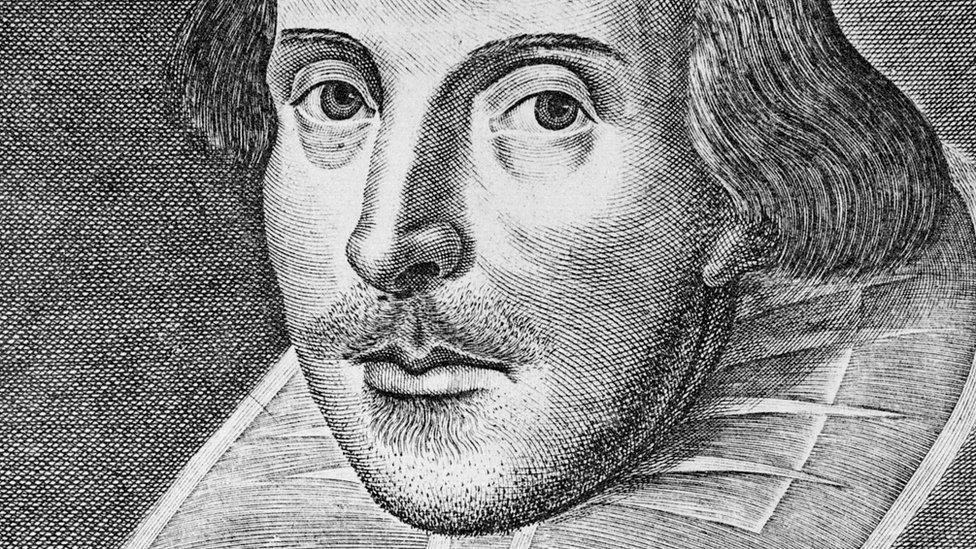
In the 400 years since his death much about William Shakespeare remains a mystery. Can we track down the places he worked, lived and visited?
William Shakespeare. The Bard. One of the most famous people ever. But little is known about him for sure.
Among the crowds of tourists and murky shadows of folklore, where can you get close to the enigma of Shakespeare? Touch what he touched?
It is a search that uncovers the theatrical world of Elizabethan England as well as religious persecution and rumours of an illegitimate child.
Here experts review some possibilities - well known and unexpected - and rate their claims.

Stratford upon Avon
Birthplace
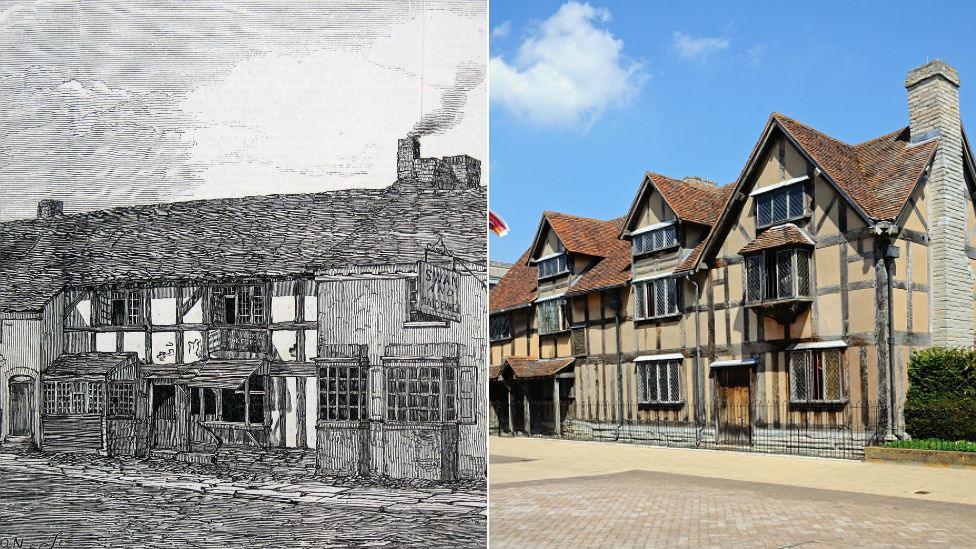
The story
Here in the English Midlands, the greatest of playwrights came into the world and spent his formative years. The house where he grew up is now lovingly cared for, external and increasingly appears in its original state. Rooms are decorated to reflect the tastes and technology of the mid 16th Century. "There's no supposition about the Henley Street birthplace, it's a house that [Shakespeare's father] John Shakespeare had owned since the 1550s," says Prof Alan Somerset, of the Records of Early English Drama project, external (Reed).
The evidence
Records show Shakespeare's father bought part of the then sub-divided property in 1556. But he did not buy the whole building, including the room where Shakespeare is thought to have been born, until 1575. It is assumed he rented the whole house and William was born in the largest bedroom. The building was listed by Shakespeare in his will, labelled as his birthplace on the first detailed map of the town in 1757 and stayed in the extended family for nearly 200 years.
Remains
Auctioned in 1847, in a run-down condition, it was bought by enthusiasts and restored, with Victorian gusto, according to details found in a 1769 engraving. Unfortunately, the engraving was of questionable accuracy. Original buildings either side of the house were demolished and modern scholars now estimate between 60-80% of Shakespeare's first home remains.

Guildhall/Grammar school
Stratford upon Avon boasts many Shakespeare sites - which have the best claims?
The story
The King Edward VI School (with Guildhall beneath) was built in the 1420s. It is a picture postcard half-timbered building and is widely believed to have been where Shakespeare was educated. The fact it is still used as a school, external adds to its charm.
The evidence
As all records from Shakespeare's time are lost, it is not absolutely certain he attended - although it seems likely. "As the son of an alderman, Shakespeare would have been entitled to attend, and there is no reason to suppose that he did not," says Prof Somerset. Prof Nandini Das, of the University of Liverpool, says other clues can be found in the plays. "His portrayal of Holofernes, the schoolteacher in Love's Labour Lost, shows his familiarity with the kind of teaching that took place in small-town schools."
Remains
"The Guildhall would host troupes of players and this might have been the room where a young Will saw his first play," says Emma Smith, professor of Shakespeare Studies at the University of Oxford. An extraordinary survivor of the late Middle Ages, most of the structure is original (although the desks are more recent). During restoration, external, medieval wall paintings, which Shakespeare will have seen, were uncovered.

New Place - Shakespeare's house
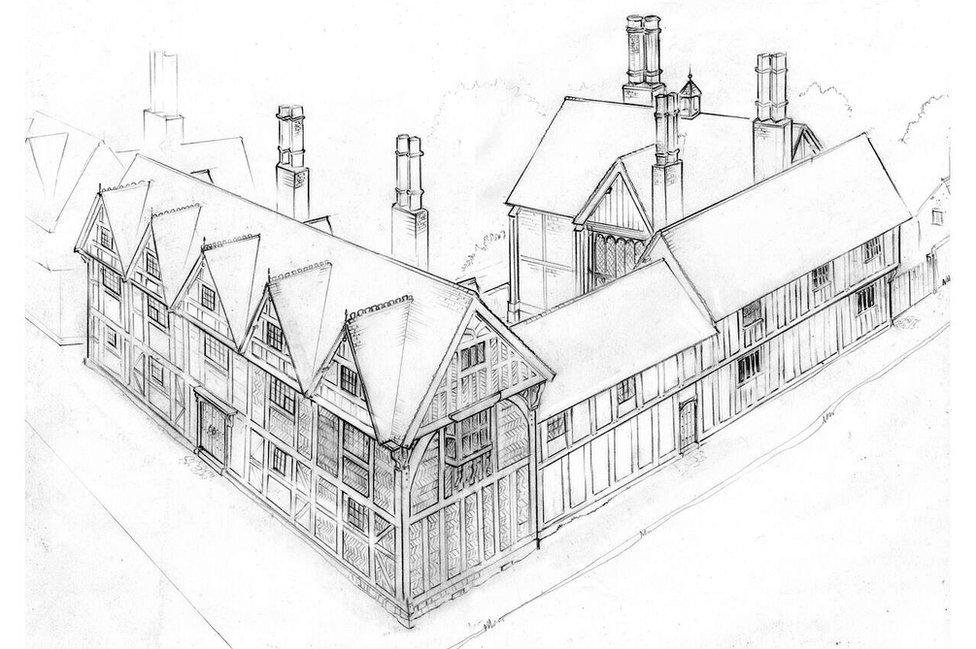
The story
Built in the 1480s, New Place was one of Tudor Stratford's finest buildings. Shakespeare bought it at the height of his theatrical success and retired here from London in 1612. After it passed out of Shakespeare's family it was bought by one Reverend Francis Gastrell. However, annoyed by an increasing flow of Shakespeare tourists, he demolished it in 1759.
The evidence
Documents listing Shakespeare's purchase of New Place, external for £60 (it is likely this was a tax dodge - it was worth double that sum) in 1597 confirm his ownership. Various other receipts and records show he spent money restoring the dilapidated building but the amount of time he spent here before 1612, and therefore how much he wrote here, is uncertain.
Remains
The half-timbered mansion Shakespeare knew was in fact almost completely demolished in 1702, apparently without a whimper of protest, to be replaced by a handsome stone building, external. This was the structure removed by Gastrell. However, a recent dig, external has found remains of Shakespeare's renovations - principally a hearth and parts of a kitchen range - but these have been reburied for landscaping. "A tree from the garden was turned into a seemingly inexhaustible supply of toys and trinkets in the 18th Century, so it's certainly the birthplace of the Shakespeare souvenir," says Prof Das.

Holy Trinity
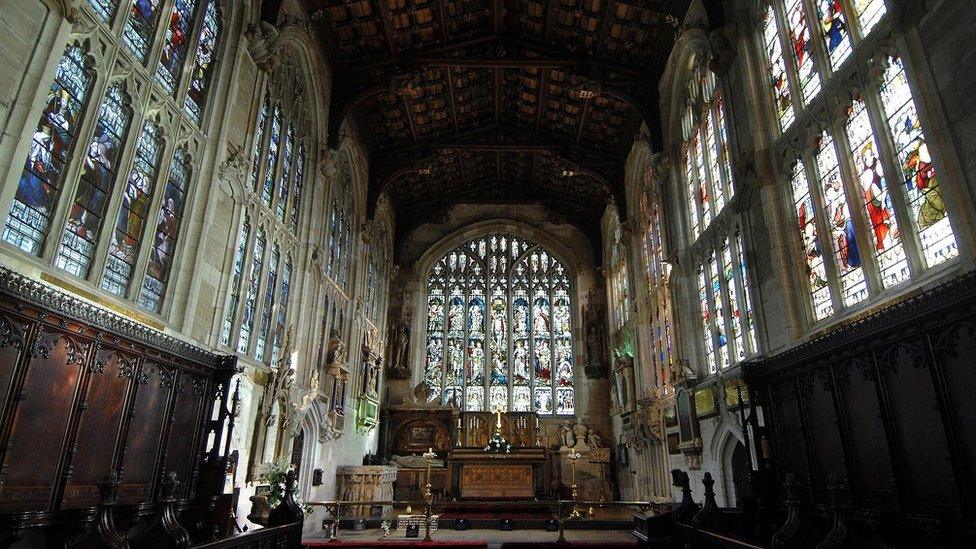
The story
Positioned in a striking location next to the River Avon, Holy Trinity is marketed to tourists as Shakespeare's Church, external. Visitors are invited to imagine the young and old playwright making his way towards the sound of its bells to worship.
The evidence
Was Shakespeare a Roman Catholic? An atheist? What is certain is he had strong links with Holy Trinity. Both he and his three children were baptised there and these register entries, external are now almost all we know about him before he turns up in London in 1592. He was also buried there on 25 April 1616 and his grave has made Holy Trinity one of the most visited churches in England. "The church, the graves and the records are still intact," says Marc Pressley, who runs the Shakespeare Resource Center website.
Remains
The church has been renovated, repaired and reordered over the past 400 years, not least the Shakespeare memorial, which has gone through at least four colour schemes. However, Shakespeare would broadly have recognised the building. Of particular note are misericords (decorated seats), a medieval font and chained Bible, all of which Shakespeare may have used.

London
The Theatre

The story
A bright-eyed Shakespeare, fresh from Stratford, first trod the boards at this theatre. Often called the "First Globe", it hosted the Bard's early works, such as Romeo and Juliet.
The evidence
Records show it opened in 1576, external, among the disreputable taverns and tanneries of Shoreditch, but it is not known for sure which plays were performed there. However, in 1594, the newly formed Lord Chamberlain's Men, led by James Burbage, moved in. Listed as part of this troupe was writer and actor William Shakespeare. Though he had been theatrically active for at least two years, his movements and output previous to this are unclear.
Remains
"Part of the reason we know about the theatre is that it was well documented that Burbage and his company specifically tore it down to build the original Globe," says Mr Pressley. The site was then built over and remembered only in folklore. But in 2008, Museum of London archaeologists, external identified its remains, including the gravel surface where people stood to watch the performances.

Middle Temple Hall
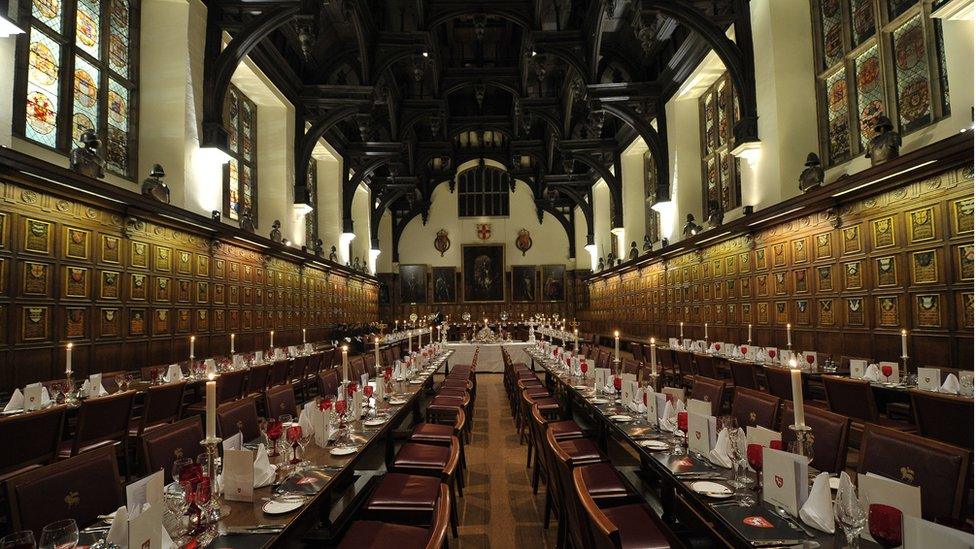
The story
The Inns of Court were established to oversee the training of barristers. Private performances for the students made the halls important venues. Some performances - and audiences - were famously drunken and chaotic. Shakespeare is believed to have taken to the stage for the premiere of Twelfth Night, one of his most popular comedies, at Middle Temple Hall, external, on Candlemas night - 2 February - in 1602.
The evidence
"We know about Shakespeare's presence here thanks to the diary of a 16th Century law student, external called John Manningham who watched the Lord Chamberlain's Men perform Twelfth Night in 1602," says Zoe Bramley, author of The Shakespeare Trail. "He seems to have been enthralled by the scene in which Malvolio is humiliated in his yellow stockings." Manningham does not actually mention Shakespeare at this performance but, in a later anecdote, shows he regularly socialised with the players.
However, experts are divided on whether Shakespeare performed. Prof Das says: "The claims this was the first performance of Twelfth Night are questionable - as is the presence of Shakespeare - but it is a stunning location, and gives a real sense of the kind of indoor spaces where Elizabethan plays were performed."
Remains
Dodging the Great Fire of 1666 and the worst of the Blitz, Middle Temple retains much of its Tudor atmosphere.

The Globe
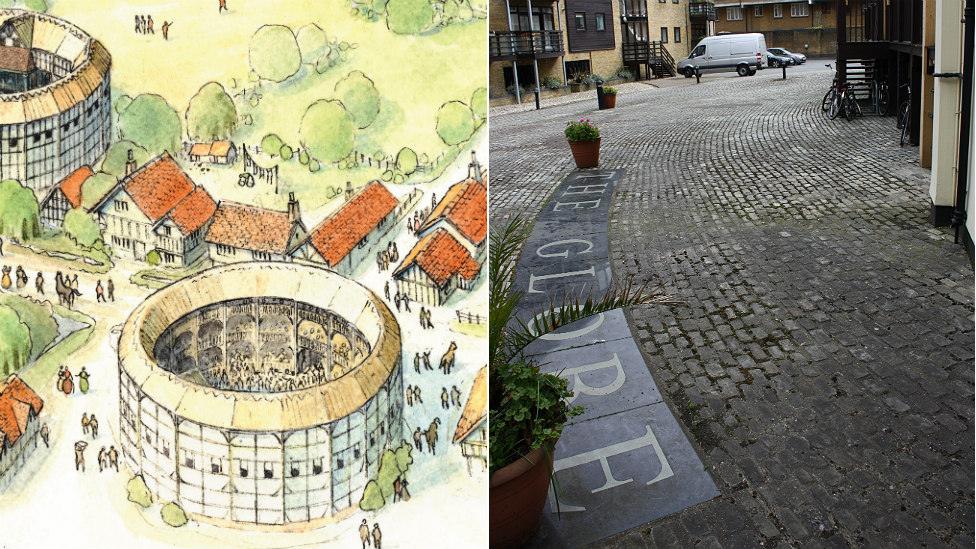
The story
Nowhere in London is more associated with Shakespeare. At the height of his powers, the Globe was the space where audiences were brought to tears of joy and sorrow while watching his plays. The distinctive circular, open-topped design is immortalised in Henry V as "This wooden O".
The evidence
The Globe was built in 1599, when the Lord Chamberlain's men found themselves without a home due to legal wrangles. They dismantled The Theatre and took it across the Thames, to a site close to rival theatre, The Rose. One of the investors backing the scheme was Shakespeare - the troupe's increasingly successful playwright. The Globe was very much his theatre. Dating Shakespeare's plays is tricky but Henry V is a contender to have been the first performed at the new venue.
Remains
The original building burned down in 1613. It was rebuilt and enjoyed continued success until it was shut by Puritans in 1642. There are no surviving pictures of the first Globe and only one rough sketch of the inside of any Elizabethan theatre. Even its dimensions were a mystery until parts of the foundations were uncovered in 1988, external. It was restored to its original splendour, external in Southwark in 1997 and remains one of the premier locations for watching Shakespeare's plays. However, as Prof Smith points out: "The current Globe is a completely new, if well researched, building on a different site, 750ft (230m) from the original."

Silver Street
Where in the capital is the one spot it can be proved Shakespeare lived?
The story
During his 20 or so years living in London, it appears Shakespeare never bought a house. Tax arrears records indicate he spent time in the Bishopsgate and Southwark areas, but the only house he can be precisely traced to is in an obscure corner of Cripplegate, external.
The evidence
Shakespeare appeared in the historical record again in 1612 when he was called as a witness in a messy civil court case, external. "Shakespeare may have acted as a go-between in the courting of Mary Mountjoy, a French craftsman's only daughter, and their former apprentice," Prof Das says. "It places him as a lodger in Silver Street, Cripplegate, in 1604." Along with civic and church records, it is possible to locate the site of the property on contemporary maps on the corner of Sylver (Silver) and Muggle (Monkswell) streets. Here, it is believed, he worked on plays such as Othello and Measure for Measure.
Remains
"Both Silver Street and the house Shakespeare lodged in have been lost to centuries of fire and bombing," says Ms Bramley. "The Mountjoy house was located opposite the little church of St Olave, which was also destroyed in the Great Fire of London. The site of the church is now a small garden adjacent to the roaring traffic of London Wall."

Blackfriars

The story
While traditional open theatres packed in the crowds, change was on the way. James Burbage, the force behind The Theatre, decided indoors was the way forward and converted part of an old friary on the north bank of the River Thames into a covered theatre. "He converted the monks' old refectory into an all-weather, high-end performance space which, with artificial lighting, intimate seating and pricier tickets, set the template for modern theatre," says Zoe Bramley, author of The Shakespeare Trail.
The evidence
"James Burbage's £600 freehold purchase of part of Blackfriars in 1596 is a matter of public record, as is the opposition from some of the more puritanical residents of the area," says Mr Pressley.
The move was blocked, external, however, persuading the company to set up the Globe. It was not until 1608 that James's son Richard secured permission to move back into Blackfriars, with Shakespeare as part owner. It was a success - the quiet, indoor setting possibly influencing the subtler style of his final plays such as The Tempest.
Remains
As with the Globe, Blackfriars fell victim in 1642 to the Puritans' loathing of plays. The building was demolished in 1655 and the area redeveloped several times. Nothing of the original building remains, besides the name of nearby Playhouse Yard. Using later documents and historical references, a reconstruction of a similar design was opened as the Sam Wanamaker Playhouse, external in 2014.

Rest of England
Rufford Old Hall, Lancashire
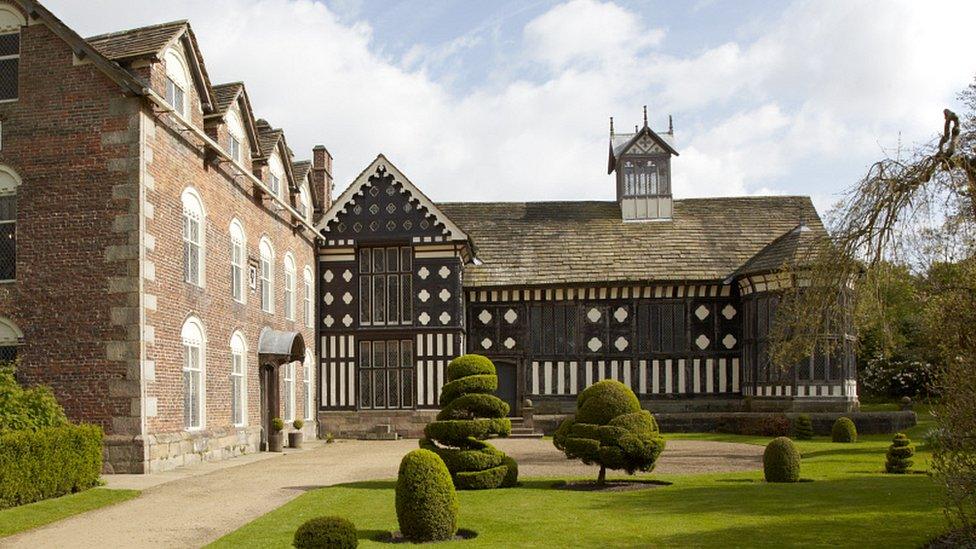
The story
Shakespeare's "lost years", before his appearance in London in 1592, have teased scholars for centuries. A 1581 will mentions a servant and possible actor "William Shakeshafte" who is recommended to Thomas Hesketh, owner of Rufford Old Hall. A defiantly Catholic teacher from Stratford also fled here at about this time. Did he take William? Also one of the trustees of the Globe, Thomas Savage, had close links to the Heskeths.
The evidence
"Shakeshafte was a fairly common name at the time and there is no other evidence Hesketh kept any players or minstrels," says Dr Sally-Beth Maclean, from Reed.
However, William must have been back in Stratford with Anne Hathaway only a year after the will was written, as their first child was born in May 1583.
Remains
Rufford's Tudor Great Hall, external, in which plays and other entertainments were staged, is substantially the original building. If Shakespeare ever visited, it has changed little from his day.

Crown Tavern, Oxford
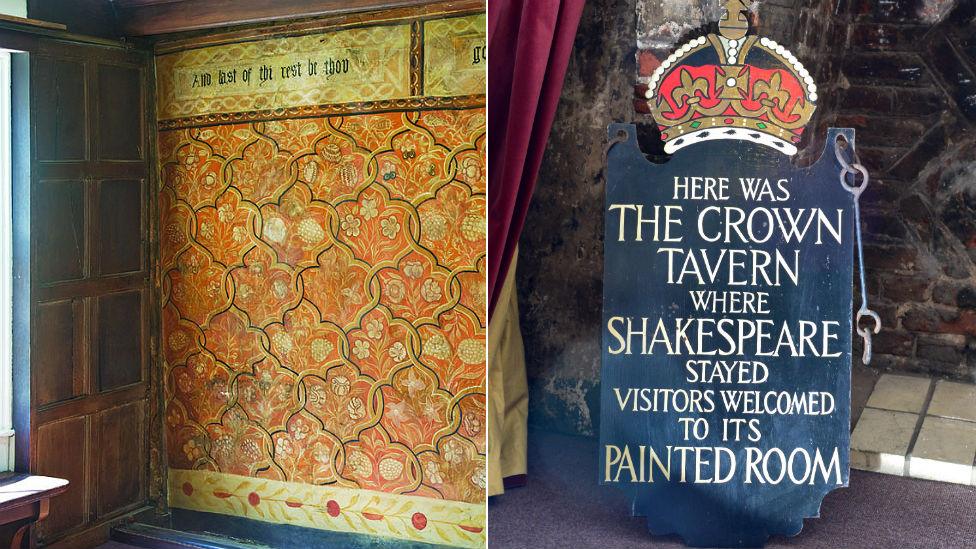
The story
During journeys between Stratford and London, Shakespeare would reputedly stop here for a bed and warm welcome from owners, Jane and John Davenant. In fact, the welcome may have been particularly warm. Sir William Davenant, John and Jane's son - who later became poet laureate - reportedly implied Shakespeare was both his godfather and biological father.
The evidence
While the figures in the story are real, and the King's Men, the acting company to which Shakespeare belonged for most of his career, knew Oxford well, Shakespeare's links to the Crown are based largely on gossip from early biographer John Aubrey. Charles Nicholl, in his book The Lodger, suggests a 1604 play called Dutch Courtesan includes a thinly veiled reference to the affair, with a lusty tavern keeper's wife seeing a man behind her husband's back. The lover is described as a "thick (short), elderly (balding), stub-bearded fellow". Prof Alan H Nelson, from Reed, says: "Very likely he stopped there on the way to Stratford but the claim he fathered William Davenant there is too good a story to be true."
Remains
The Crown closed in the 18th Century but the medieval building partly survives behind a later facade. In the 1920s, one of the main rooms was discovered to still have wall paintings from the Elizabethan era, external.

St Mary's Guildhall, Coventry
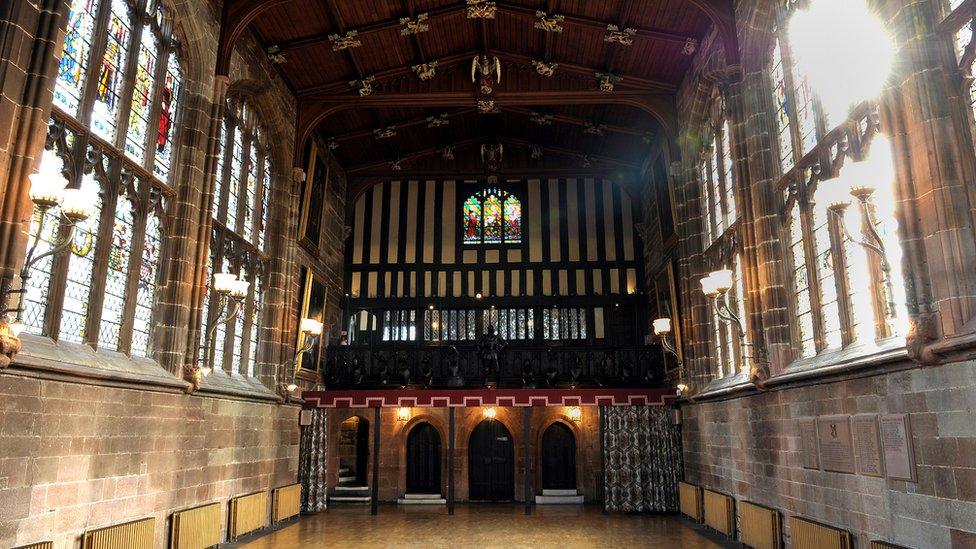
The story
The King's Men performed here in 1603, 1608 and 1613 while another acting troupe, the Lord Pembroke's Men, played here in 1593. Shakespeare was certainly a member of the former troupe and possibly the latter. He may even have visited the city as a boy to witness its famous mystery plays. The city features in several of Shakespeare's plays and the hall is a logical choice for a performance venue.
The evidence
"Coventry lay at the hub of an important network of roads and was a magnet for touring acting companies," says Dr Maclean. "But while we know which groups came and how much they were paid, they do not list notable members of the cast." It is uncertain if Shakespeare was ever in Pembroke's Men, or when - even if - he toured with the King's Men, as writing duties may have occupied his time.
Remains
A survivor of the Coventry Blitz, the medieval hall, external is one of the finest of its type in the UK, boasting rare carvings and a 15th Century tapestry. "Whatever the case about Shakespeare, the hall is a stunning place," says Prof Das.

Wilton House, Wiltshire
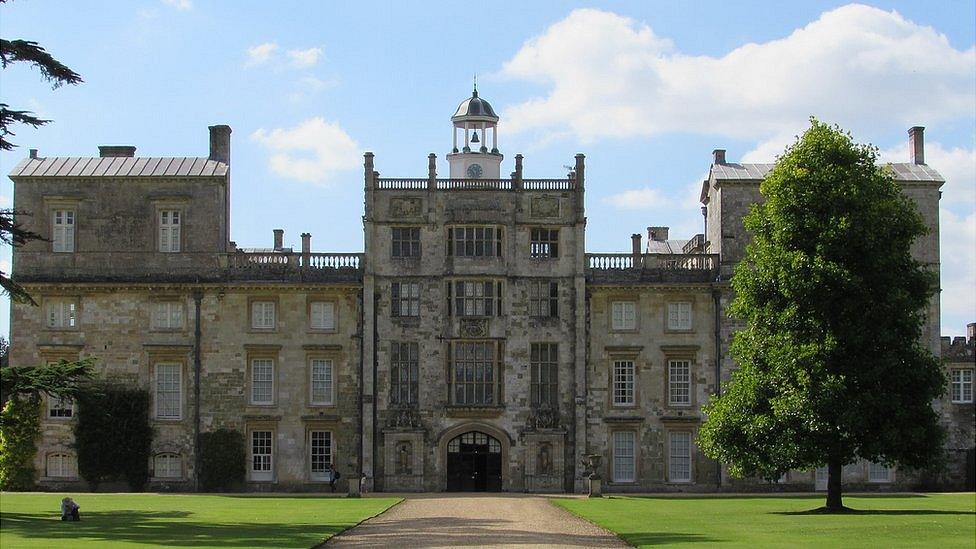
The story
In 1603 the newly crowned king of England, James I, was touring the country. A letter, mentioned by a Victorian antiquarian, was apparently held at Wilton House, seat of the Earls of Pembroke. The letter detailed the then Lady Pembroke telling her son to bring the king to Wilton House to see "As You Like it", with the additional lure of "we have the man Shakespeare with us". The king apparently duly arrived and was treated to lavish entertainment.
The evidence
"The Earls of Pembroke were noted patrons of the arts and the records show the King's Men, Shakespeare's acting company, were paid £30 to perform at Wilton in 1603," says Dr Maclean. "Given the prestige of the occasion and the fact the performance was, implicitly, by royal command, there's a good chance that Shakespeare was part of the company." However, the best evidence - the letter - has never surfaced.
Remains
The large Tudor building, which the King's Men would have known, was pulled down in the 1630s to be replaced by an even grander complex. But by a quirk of design or fate, part of the earlier building survived. One tower on the east front, while much altered internally, preserves the appearance of the old house.

Great Hall, Hampton Court Palace
Hardly a corner of England does not have a story about Shakespeare - which are true?
The story
On the accession of James I, the Lord Chamberlain's Men were renamed the King's Men. The Christmas celebrations of 1603-4 saw them perform seven plays for the court over three weeks. While the king was keen on such entertainment, it was rumoured he found it difficult to concentrate, so Shakespeare apparently wrote Macbeth, which was short and also set in James's Scottish homeland. It was premiered in the Great Hall on 7 August 1606.
The evidence
The presence of the King's Men at the Great Hall is well attested. "Shakespeare's company began their featured performances during the Christmas season in 1594," Dr Maclean says. "They returned every year thereafter for the festive season. When they were adopted by King James I as patron, they continued to perform often and regularly." As for the special showing of Macbeth, its first recorded performance is at the Globe in 1611 but it could have been written as early as 1606.
Remains
The Great Hall, built by Henry VIII, is one of the oldest parts of Hampton Court Palace, external. It retains most of its Tudor character and is largely unchanged from Shakespeare's day.

Discover more about Shakespeare
- Published7 April 2016
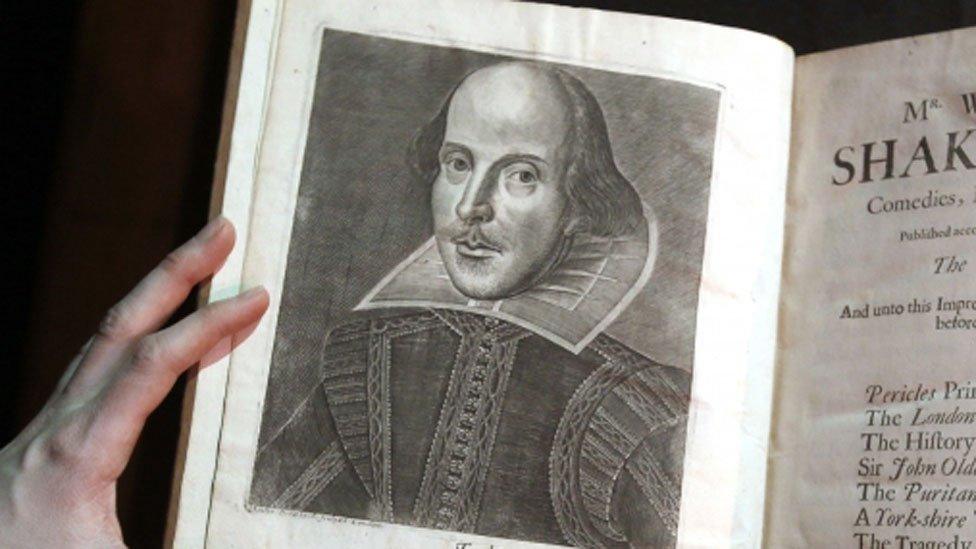
- Published27 March 2016

- Published29 February 2016
